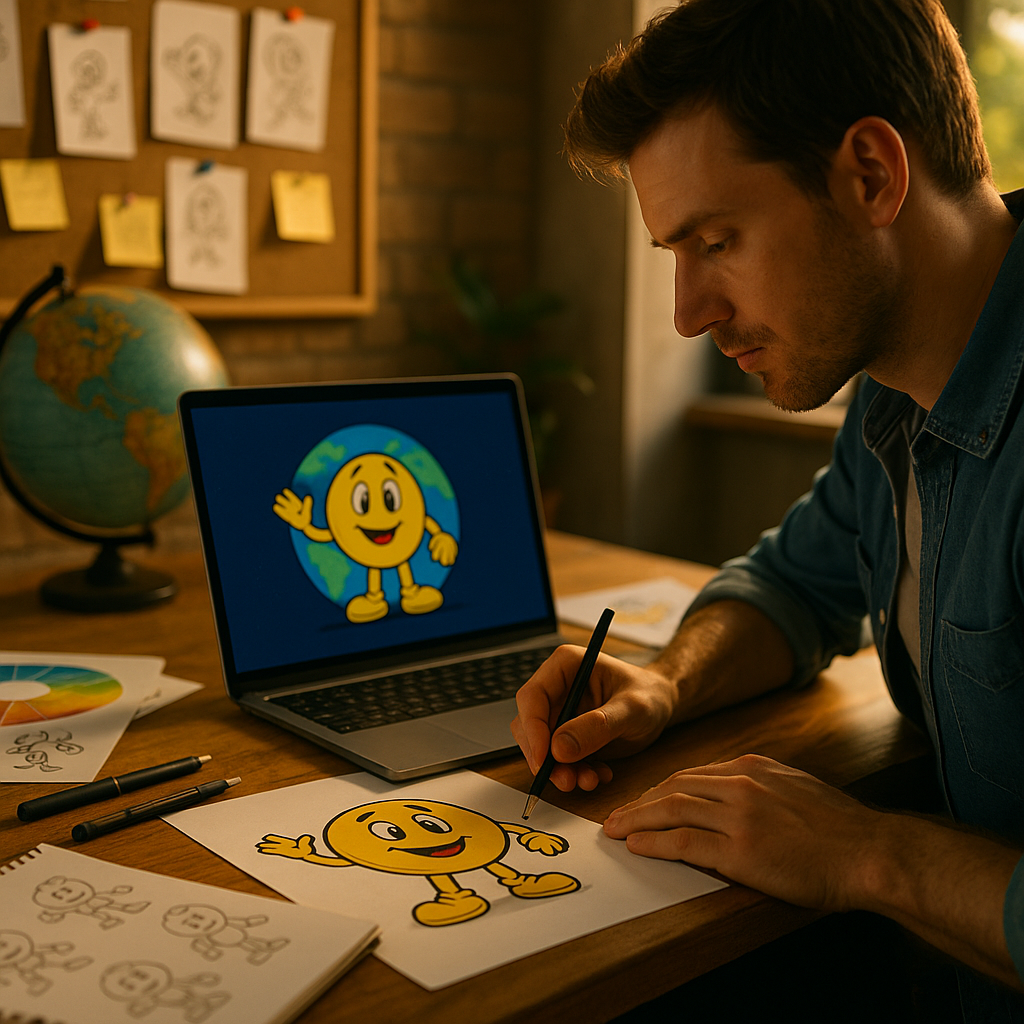A guide to creating a brand mascot that appeals to a global audience is essential for businesses aiming to build strong, cross-cultural connections. A well-crafted mascot can boost brand recognition, foster trust, and create emotional bonds worldwide. Dive in to discover expert-backed strategies that ensure your mascot resonates universally and elevates your brand’s global identity.
Understanding Cultural Sensitivity in Brand Mascots
One of the most critical factors in developing a brand mascot for international markets is cultural sensitivity. Brands like KFC and Coca-Cola have thrived globally by ensuring their mascots and brand personalities transcend borders while respecting local traditions. Before designing, research audience preferences, values, and symbolism in potential regions. Consider colors, gestures, attire, and character attributes that may carry different meanings worldwide.
Expert insight: According to a 2025 Nielsen global survey, 78% of consumers trust brands that reflect their own culture and values. Therefore, integrating culturally relevant elements and avoiding stereotypes is vital to prevent misinterpretation and backlash. Collaborate with local consultants or cultural experts to vet mascot concepts pre-launch.
Defining Your Brand Mascot’s Personality With Global Appeal
Your mascot should embody your brand values while appealing to diverse audiences. Define traits that align with your mission: reliability, friendliness, innovation, or humor. Research by the Branding Institute highlights that mascots with universally positive traits—such as approachability, honesty, and enthusiasm—outperform those with niche personalities. Ensure your mascot’s actions, tone, and backstory reinforce inclusivity and positivity.
Tip: Think about memorable mascots like Coca-Cola’s polar bear. The animal isn’t tied to a specific culture, but its warmth and friendliness have broad appeal. Consider using animals, abstract figures, or fantasy characters to promote inclusivity and avoid cultural pitfalls.
Visual and Verbal Design Considerations for International Success
Designing a global mascot involves more than visual creativity. Colors, shapes, icons, and styles should be carefully selected. For example, blue may signify trust in Western regions but can represent mourning in some East Asian cultures. Avoid colors or motifs associated with negative perceptions in target markets.
- Adaptability: Create a mascot that looks equally good in digital, print, 3D, and animated forms. It should be recognizable even when simplified for mobile screens or merchandise.
- Language Neutrality: Avoid incorporating linguistic puns or text directly into the mascot’s name or appearance. Instead, design a globally understandable visual narrative supported by localized taglines.
- Inclusive Storytelling: Craft a flexible backstory that can be tailored to local markets without losing its core identity. Give marketing teams the freedom to adapt gestures or expressions for regional relevance.
Invest in professional illustration and animation to ensure your mascot delivers consistent visual quality worldwide. Test early drafts with diverse focus groups, gathering feedback on potential misreadings or preferences.
Launching Your Mascot With Global Audience Engagement
Rolling out your mascot across international markets requires a cohesive strategy. Utilize a phased launch, testing your mascot’s reception in pilot regions to refine its approach. Collaborate with local influencers, celebrities, or trusted voices to introduce the character authentically.
- Localized Campaigns: Create regionally tailored narratives and interactive campaigns featuring your mascot.
- Digital Integration: Introduce the mascot across global social media, video, and chat platforms using region-specific content calendars.
- Real-time Feedback: Monitor engagement metrics and audience sentiment closely. Use surveys, polls, and social listening to gather actionable insights, then adjust accordingly.
According to Statista’s 2025 global brand report, companies that actively engage users with interactive mascots see a 35% higher brand recall in emerging markets. Consider developing mascot-themed AR filters or chatbots for enhanced connection.
Measuring Impact and Evolving Your Global Mascot
Once your mascot is live, continuously track its impact using brand lift studies, sentiment analysis, and market-specific KPIs such as engagement and conversion rates. Gather feedback from regional teams regularly. Be open to evolving your mascot’s look or behavior based on the data collected—some of the world’s most beloved mascots have gone through strategic redesigns to remain relevant.
Best practices: Schedule annual mascot reviews as part of your brand management cycle. Document successes, challenges, and cultural missteps to inform future updates. This iterative process ensures ongoing cross-cultural resonance and strengthens your mascot’s role as a global brand ambassador.
Conclusion: Elevate Your Brand With a Universally Loved Mascot
Creating a brand mascot that appeals to a global audience demands cultural insight, thoughtful design, and an adaptable launch strategy. Stay attuned to local preferences, continuously seek feedback, and refine your approach. A well-executed mascot can become your brand’s most powerful asset for fostering worldwide loyalty and recognition in 2025 and beyond.
FAQs: Creating a Brand Mascot for Global Appeal
- What makes a brand mascot effective on a global scale?
An effective global mascot is culturally neutral or adaptable, reflects universal brand values, and can be easily understood across languages and markets. Adaptable visual and narrative elements are key for international success. - How do I avoid cultural faux pas with my mascot design?
Collaborate with local experts, vet your designs for symbolism and colors with regional teams, and run cross-cultural focus groups before launch. Avoid stereotypes, and seek continuous feedback after rollout. - Does my mascot need to look different in each region?
Not necessarily. The core design should remain consistent, but it’s effective to tailor specific elements—such as gestures, accessories, or stories—to suit local sensibilities without altering the mascot’s identity. - Should my mascot have a detailed backstory?
Yes, a flexible backstory helps audiences connect with your mascot. Keep the core narrative universal but build in localized details that resonate with different regions for deeper engagement. - What are the most common mistakes in launching global mascots?
Common errors include overlooking cultural research, failing to test with target audiences, using linguistically-confusing names, or sticking rigidly to one depiction. Prioritize adaptability, inclusivity, and local relevance to avoid these pitfalls.
